ALBUM AMICORUM -- DAS GROSSE STAMMBUCH OF PHILIPP HAINHOFER, in German, Latin, French and Italian, ILLUMINATED MANUSCRIPT ON VELLUM AND PAPER
ALBUM AMICORUM -- DAS GROSSE STAMMBUCH OF PHILIPP HAINHOFER, in German, Latin, French and Italian, ILLUMINATED MANUSCRIPT ON VELLUM AND PAPER Germany, Italy and Bohemia, 1596-1633 208 x 160mm. 10 prefatory paper leaves, 108 leaves including nine blanks, 13 paper leaves and two card leaves; two leaves with pasted-on embroidered panels, one with a painting on silk, one with a drawing laid-down, one with a painting laid down and one with a print laid-down, 10 final paper leaves; 6 of the front prefatory leaves and six of the final leaves of Turkish paper ( ebru ); paginated 1-227 starting with title-page (occasional slight rubbing or creasing, a few leaves with inconsequential spotting or stains, a few leaves loosening on guards). Red velvet over wooden boards, leaves often mounted on guards, and sewn onto four double cords which loose through boards, red velvet wrapper secured by cords. Red morocco box. A RENOWNED 'BOOK OF FRIENDSHIP' REAPPEARS: A MONUMENT TO THE PRINCES OF EUROPE AND COURT ART AT THE ADVENT OF THE THIRTY YEARS WAR The Collector: Philipp Hainhofer (1578-1647), was an internationally influential figure. After studying in Padua, Cologne and the Netherlands he followed his father's example and set up as a cloth merchant in Augsburg, his native city. He expanded his trade beyond the Italian silks that were its mainstay to encompass all luxury goods. His princely clients were quick to recognise the wider service that his education, charm and intelligence could offer. He was soon employed not only as an art advisor and supplier but as a political agent. He travelled widely to carry out diplomatic and ceremonial duties: the contacts he made with the princes of Europe are recorded in the signatures of the present manuscript. These contacts and duties are more discursively documented in Hainhofer's surviving travel journals and in his correspondence with his patrons: these sources also chronicle the history of his Stammbuch : O. Doering, 'Des Augsburger Patriciers Philipp Hainhofer Beziehungen zum Herzog Philipp II von Pommern-Stettin: Correspondenzen aus den Jahren 1610-1619', Quellenschriften für Kunstgeschichte und Kunsttechnik , n.s., vi (1894) and 'Des Augsburger Patriciers Philipp Hainhofer Reisen nach Innsbruck und Dresden', ibid. , x (1901). The Book : The fashion for assembling Alba Amicorum (Books of Friendship) appears to have started among German students in the middle of the 16th century. At first the signatures of those they met on their travels were collected in the margins of readymade books, sometimes printed emblem books and sometimes blank albums. Gradually they became more individual, ad hoc creations: Turkish papers and Venetian costume paintings, were particularly popular additions to the pages of autographs, emblems and heraldry. But there can be no other that compares with Hainhofer's collection. It was regarded during his lifetime as one of the sights that any discerning visitor to Augsburg should see, this 'uberaus künstliches Stammbuch, dergleichen wol nirgents solle gesehen werden'. He had first started collecting signatures and coats of arms when he was 15. It became a joint project with his father and brothers to put together a great collection, to make 'ein Denkmal des gegönnten Gunst, ein Pfand der unsterblichen Freundschaft, eine Erquickung nach der Sorgen und Mühen des Lebens'. Before long he had taken sole charge and he continued to collect throughout his life. By his later years there were five Stammbücher , three of them more modest collections (two devoted to Augsburg families, now in the Stadtbibliothek of the city, and a small travel Stammbuch in the Herzog August Bibliothek, Wolfenbüttel). The most important, the Stammbuch where the signatures and arms of those of higher rank and prestige were gathered, was divided into two in 1613: Hainhofer had decided to grade his ever-growing collection, henceforth the Grosse Stammbuch would be for princely persons and the Kleinere fo
ALBUM AMICORUM -- DAS GROSSE STAMMBUCH OF PHILIPP HAINHOFER, in German, Latin, French and Italian, ILLUMINATED MANUSCRIPT ON VELLUM AND PAPER
ALBUM AMICORUM -- DAS GROSSE STAMMBUCH OF PHILIPP HAINHOFER, in German, Latin, French and Italian, ILLUMINATED MANUSCRIPT ON VELLUM AND PAPER Germany, Italy and Bohemia, 1596-1633 208 x 160mm. 10 prefatory paper leaves, 108 leaves including nine blanks, 13 paper leaves and two card leaves; two leaves with pasted-on embroidered panels, one with a painting on silk, one with a drawing laid-down, one with a painting laid down and one with a print laid-down, 10 final paper leaves; 6 of the front prefatory leaves and six of the final leaves of Turkish paper ( ebru ); paginated 1-227 starting with title-page (occasional slight rubbing or creasing, a few leaves with inconsequential spotting or stains, a few leaves loosening on guards). Red velvet over wooden boards, leaves often mounted on guards, and sewn onto four double cords which loose through boards, red velvet wrapper secured by cords. Red morocco box. A RENOWNED 'BOOK OF FRIENDSHIP' REAPPEARS: A MONUMENT TO THE PRINCES OF EUROPE AND COURT ART AT THE ADVENT OF THE THIRTY YEARS WAR The Collector: Philipp Hainhofer (1578-1647), was an internationally influential figure. After studying in Padua, Cologne and the Netherlands he followed his father's example and set up as a cloth merchant in Augsburg, his native city. He expanded his trade beyond the Italian silks that were its mainstay to encompass all luxury goods. His princely clients were quick to recognise the wider service that his education, charm and intelligence could offer. He was soon employed not only as an art advisor and supplier but as a political agent. He travelled widely to carry out diplomatic and ceremonial duties: the contacts he made with the princes of Europe are recorded in the signatures of the present manuscript. These contacts and duties are more discursively documented in Hainhofer's surviving travel journals and in his correspondence with his patrons: these sources also chronicle the history of his Stammbuch : O. Doering, 'Des Augsburger Patriciers Philipp Hainhofer Beziehungen zum Herzog Philipp II von Pommern-Stettin: Correspondenzen aus den Jahren 1610-1619', Quellenschriften für Kunstgeschichte und Kunsttechnik , n.s., vi (1894) and 'Des Augsburger Patriciers Philipp Hainhofer Reisen nach Innsbruck und Dresden', ibid. , x (1901). The Book : The fashion for assembling Alba Amicorum (Books of Friendship) appears to have started among German students in the middle of the 16th century. At first the signatures of those they met on their travels were collected in the margins of readymade books, sometimes printed emblem books and sometimes blank albums. Gradually they became more individual, ad hoc creations: Turkish papers and Venetian costume paintings, were particularly popular additions to the pages of autographs, emblems and heraldry. But there can be no other that compares with Hainhofer's collection. It was regarded during his lifetime as one of the sights that any discerning visitor to Augsburg should see, this 'uberaus künstliches Stammbuch, dergleichen wol nirgents solle gesehen werden'. He had first started collecting signatures and coats of arms when he was 15. It became a joint project with his father and brothers to put together a great collection, to make 'ein Denkmal des gegönnten Gunst, ein Pfand der unsterblichen Freundschaft, eine Erquickung nach der Sorgen und Mühen des Lebens'. Before long he had taken sole charge and he continued to collect throughout his life. By his later years there were five Stammbücher , three of them more modest collections (two devoted to Augsburg families, now in the Stadtbibliothek of the city, and a small travel Stammbuch in the Herzog August Bibliothek, Wolfenbüttel). The most important, the Stammbuch where the signatures and arms of those of higher rank and prestige were gathered, was divided into two in 1613: Hainhofer had decided to grade his ever-growing collection, henceforth the Grosse Stammbuch would be for princely persons and the Kleinere fo
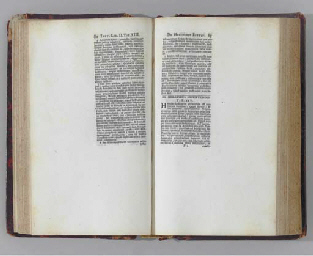
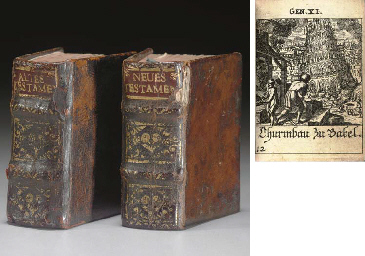
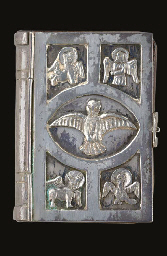
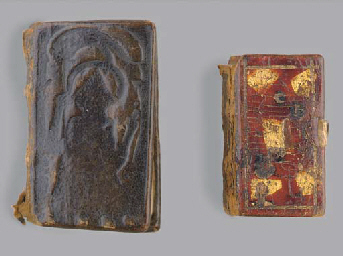
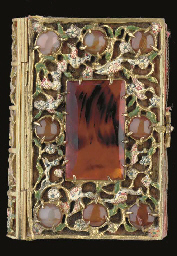






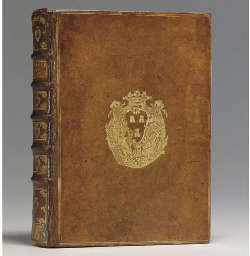



Try LotSearch and its premium features for 7 days - without any costs!
Be notified automatically about new items in upcoming auctions.
Create an alert